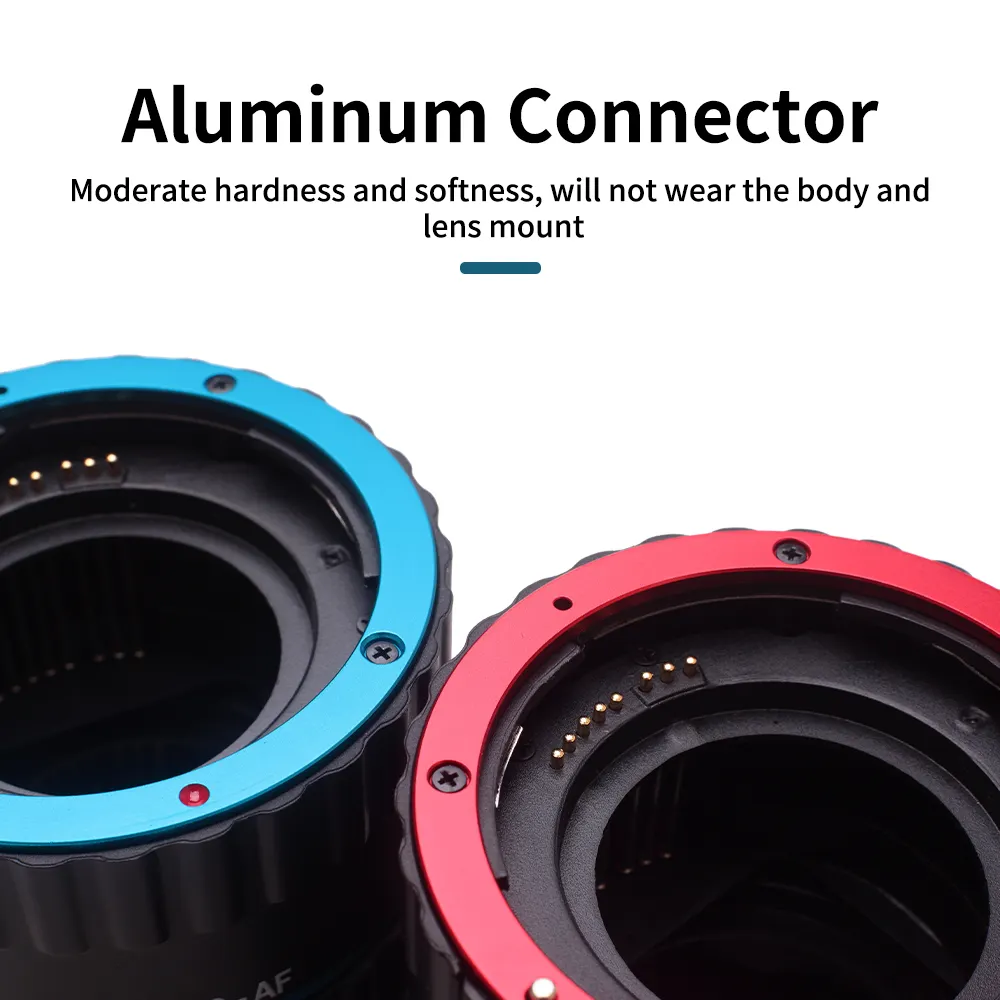

Time:2025-04-17 Views:1

Oxidation is a common concern for any equipment, and macro lens adapters are no exception. Their oxidation resistance plays a vital role in maintaining their performance and appearance over time.
Metallic Components and Oxidation
Many macro lens adapters contain metallic parts, such as those made of aluminum, brass, or stainless steel. Aluminum is a lightweight and commonly used material in adapter construction. However, aluminum is prone to oxidation in the presence of oxygen and moisture. When aluminum oxidizes, it forms a thin layer of aluminum oxide on its surface. While this oxide layer can initially act as a protective barrier to some extent, in certain conditions, such as high humidity or in the presence of corrosive substances, the oxidation can progress and lead to pitting and degradation of the metal. Brass, another metal used in some adapters, can also be affected by oxidation. Brass contains copper, which can oxidize and form a greenish - blue patina over time. This not only changes the appearance of the adapter but can also affect the functionality if the oxidation causes the metal to corrode and weaken. Stainless steel, on the other hand, is generally more resistant to oxidation due to the presence of chromium, which forms a passive oxide layer that protects the underlying metal.
Impact on Function and Aesthetics
The oxidation of macro lens adapters can have significant impacts on both their function and aesthetics. In terms of function, if the metallic parts of the adapter corrode due to oxidation, it can lead to problems with the mechanical operation. For example, the threads on an adapter made of corroded metal may become rough or damaged, making it difficult to screw the adapter onto the lens or camera mount. This can result in loose connections, which can affect the stability of the lens - camera combination during shooting. From an aesthetic perspective, oxidation can make the adapter look unsightly. The formation of rust or patina on the surface can give the adapter a worn - out and unappealing appearance. This may not directly affect the image quality, but it can be a concern for photographers who take pride in the condition of their equipment.
Prevention and Protection
To enhance the oxidation resistance of macro lens adapters, manufacturers often take several measures. One common approach is to apply protective coatings to the metallic parts. For aluminum components, anodizing is a popular process. Anodizing creates a thicker and more durable oxide layer on the aluminum surface, significantly improving its oxidation resistance. Brass parts can be coated with lacquers or other protective finishes to prevent the formation of patina. In addition, photographers can also take steps to protect their macro lens adapters from oxidation. Storing the adapters in a dry environment, away from excessive moisture and corrosive substances, can help. Regular cleaning and inspection of the adapters to detect any early signs of oxidation and taking appropriate measures, such as applying a rust - inhibitor in case of minor oxidation on non - coated metals, can also extend the lifespan and maintain the performance of the macro lens adapter.
Read recommendations: